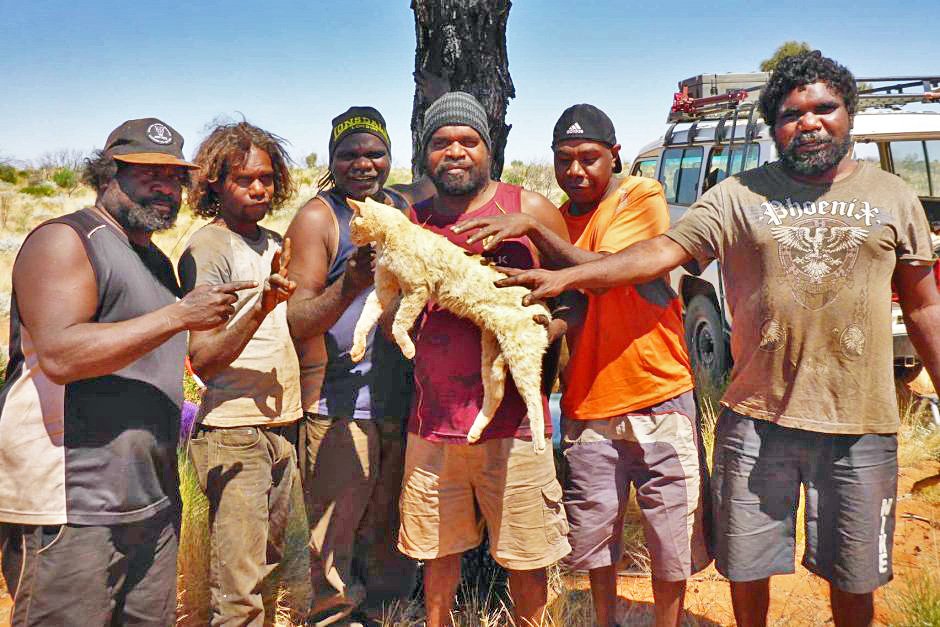
You know about the attempt by the Aussie authorities to try and exterminate the entire feral cat population of that continent. They don’t know how many cats there are (about 6m) but they want rid of all of them and they don’t mind how it is done. Inhumanely is fine by them. But it is an impossible task. You can’t get rid of all the feral cats.

One scientist, Katherine Moseby PhD, realises this. She has come up with a different strategy which is more humane but it might be equally unlikely to succeed, I am afraid.

THERE ARE SOME MORE ARTICLES ON THE AUSSIE FERAL CAT PROBLEM AT THE BASE OF THE PAGE.
She wants to force a speeded-up evolution of the small mammals and marsupials that cats prey upon so they learn to successfully live with the feral cat.
The problem as she sees it is that the settlers to Australia in the 1800s introduced rabbits and as well as domestic cats. The rabbits procreated super quickly and before long there were hundreds of millions of them wild in Australian providing meals for the foxes and feral cats. This lead to a proliferation of these predators. It was a double whammy. The settlers introduced non-native species that were both prey animals and predators. The resident, small native species such as the greater bilby and the burrowing bettong were caught in this sudden increase of prey and predator and didn’t have time to evolve to learn how to survive these predators.
The idea she has is to force a speeded-up evolution of these small native species so they can defend themselves against cat predation. To achieve that goal she is doing the opposite to killing cats: she is introducing cats to a controlled enclosure where there are bilbies.
The idea is to put enough pressure on the marsupials to produce behavioral or — even better — evolutionary change. – Yale School of the Environment.
In one experiment she released five cats into a fenced paddock with about 300 greater bilbies and waited 2 years. At the end of that period she took the bilbies to another enclosure where there were more cats. She added some more bilbies to this enclosure who had not been exposed to cats beforehand. She wanted to see whether the bilbies who’d be exposed to cats were able to survive against cat predation better than the naïve bilbies.
It worked. After 40 days 25% of the naïve bilbies were alive while 66% of the more predator savvy bilbies had survived. However, she is unsure if this was a learned behaviour or an evolutionary response. By ‘evolutionary response’ I mean natural selection per Darwinian principles to select for bilbies that were better able to deal with the presence of feral cat predators.
The good aspect of this for me is that the thinking is more enlightened and humane. It is also more pragmatic and it is about long-term thinking.
The idea that you can bring Armageddon upon all feral cats is plainly morally wrong and impractical. The Aussie feral cat problem needs a more sophisticated approach.
Perhaps the problem has become too bad to fix. It was left unattended for too long. The feral cat is very much part of the Australian ecosystem. And suddenly there are probably bigger fish to fry such as climate change, the effects of which are constantly being made violently evident to the Australians with massive wildfires and huge floods plus the destruction of the Great Barrier Reef.
And, ironically Australia is feeding climate change by mining coal and selling it to the Chinese. China is the world’s biggest producer of environment carbon dioxide. It has got too bad. On the one hand Australia is trying their utmost to protect their small native species from cats and on the other they are contributing to their destruction via climate change disasters. A mess of gigantic proportions.
I wonder if it humankind can go so far down a road of failure in conservation that it becomes impossible to turn around? That’s my feeling. Too many human mistakes and failings. And don’t blame the cat. They are not at fault. It’s the fault of humankind which in terms of animal and plant conservation is a disease on the planet.
SOME MORE ON THE AUSSIE FERAL CAT:

